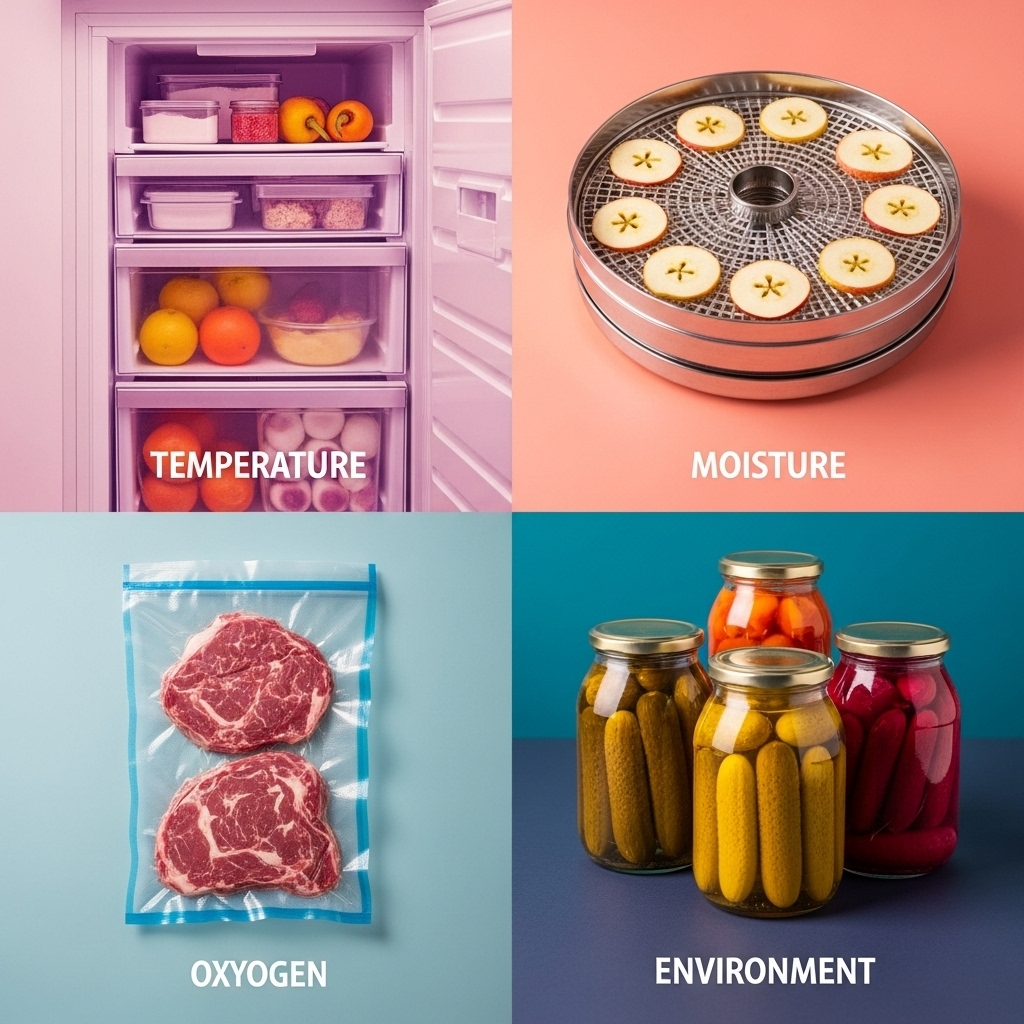
The principles of food preservation provide a timeless solution to extend shelf life and reduce waste. Our Store Fresh guide teaches you the essential methods to keep your food fresh and save money.
Table of Contents
- First, Know Your Enemy: The 4 Causes of Food Spoilage
- Principle #1: Control Temperature (Hot and Cold)
- Principle #2: Remove Moisture (Drying and Dehydrating)
- Principle #3: Remove Oxygen (Airtight and Vacuum Sealing)
- Principle #4: Control the Environment (Acidity and Fermentation)
- Your Blueprint for a Fresher, Less Wasteful Kitchen
- Frequently Asked Questions
- References
First, Know Your Enemy: The 4 Causes of Food Spoilage
- Microbial Growth (Bacteria, Molds, Yeasts): Microorganisms thrive on food, causing decay and spoilage.
- Enzymatic Activity: Natural enzymes ripen produce, but they can also over-ripen and ruin it.
- Oxidation: Air exposure alters food, changing its taste, appearance, and nutrition.
- Moisture: Water in food speeds up spoilage by supporting microbial growth.
Principle #1: Control Temperature (Hot and Cold)
Using Cold to Slow Things Down
Refrigeration keeps food fresh by slowing bacterial growth. Ideal temperatures are 0°C to 4°C (32°F to 39°F). Foods like salads, dairy, and meats thrive in this range.
Freezing at -18°C (°F) halts microbial activity completely and is perfect for long-term storage [1]. For example, frozen vegetables retain nutrition while lasting up to a year.
Using Heat to Stop Spoilage
Canning and pasteurization use heat to kill harmful microorganisms and enzymes. Foods are sealed in sterile containers and heated to specific temperatures.
For instance, high-acid canned goods like tomatoes have a long shelf life of up to two years [2]. These methods ensure food safety and preserve flavor.
Principle #2: Remove Moisture (Drying and Dehydrating)
Traditional and Modern Dehydration
Sun-drying is an ancient method still used for fruits and herbs. Modern food dehydrators allow precise moisture removal while preserving texture and flavor.
They’re ideal for snacks like apple slices, beef jerky, or even pesto powder [3]. You can try oven-drying thin orange slices as an easy entry point for modern dehydration.
